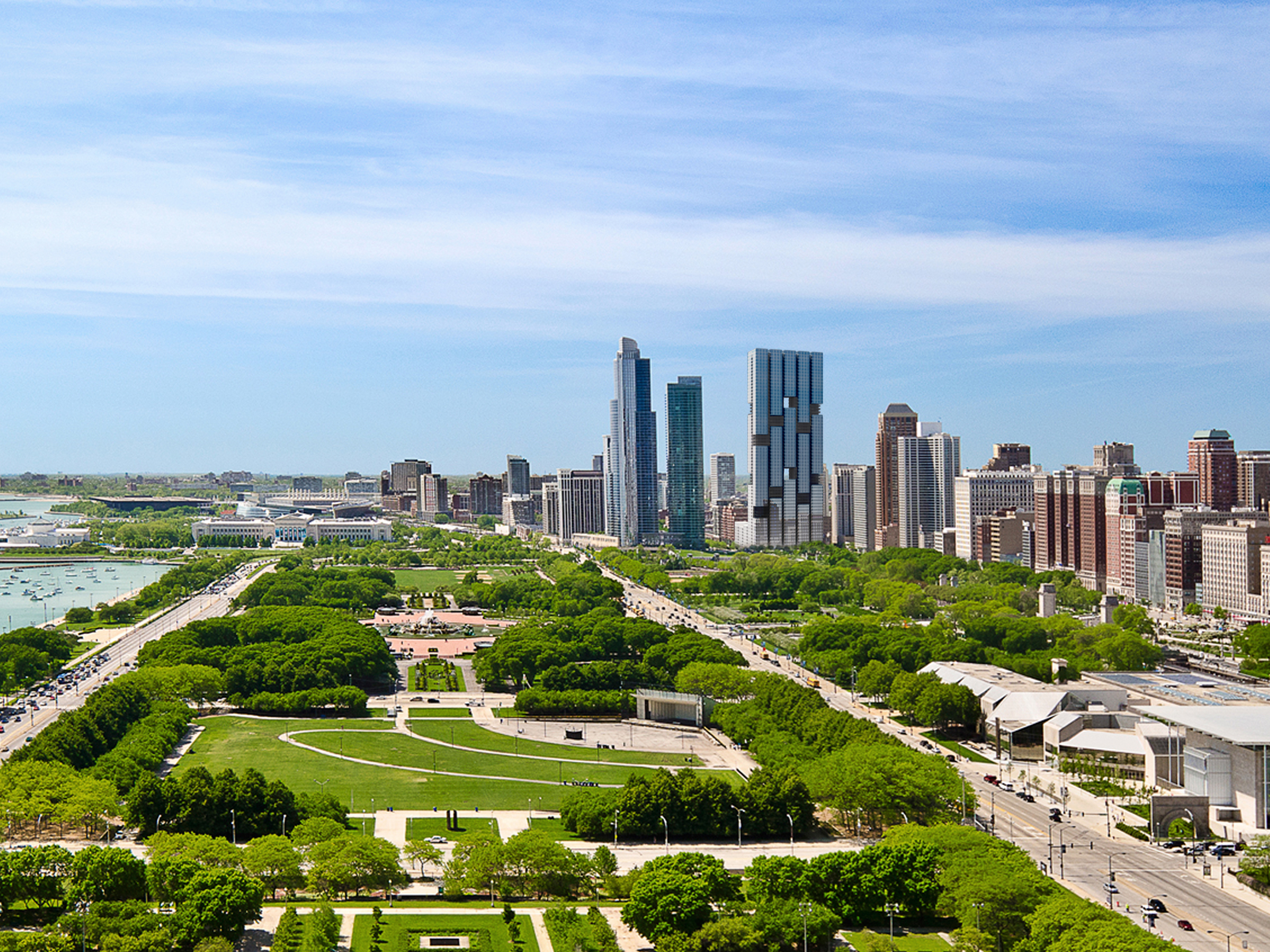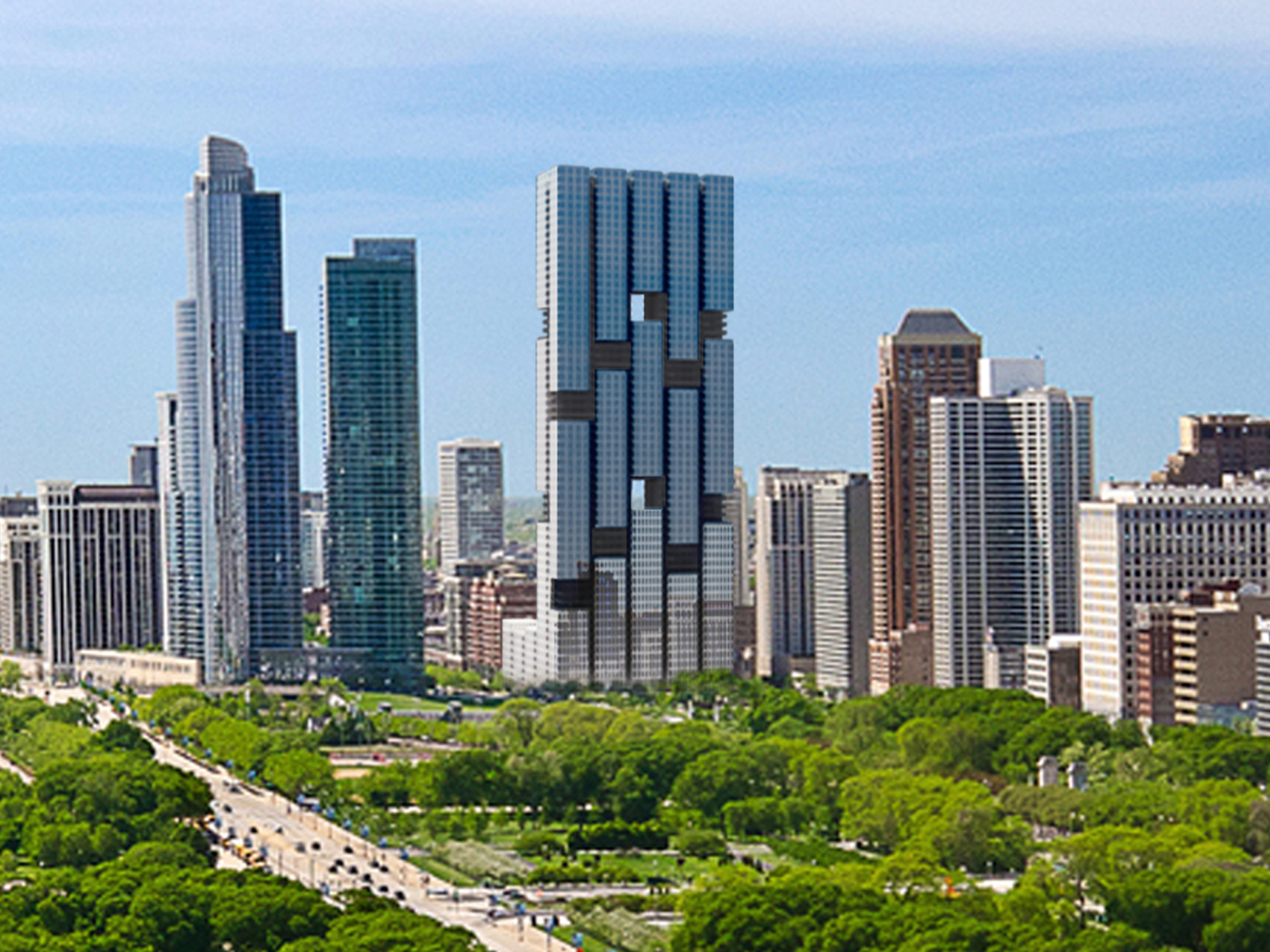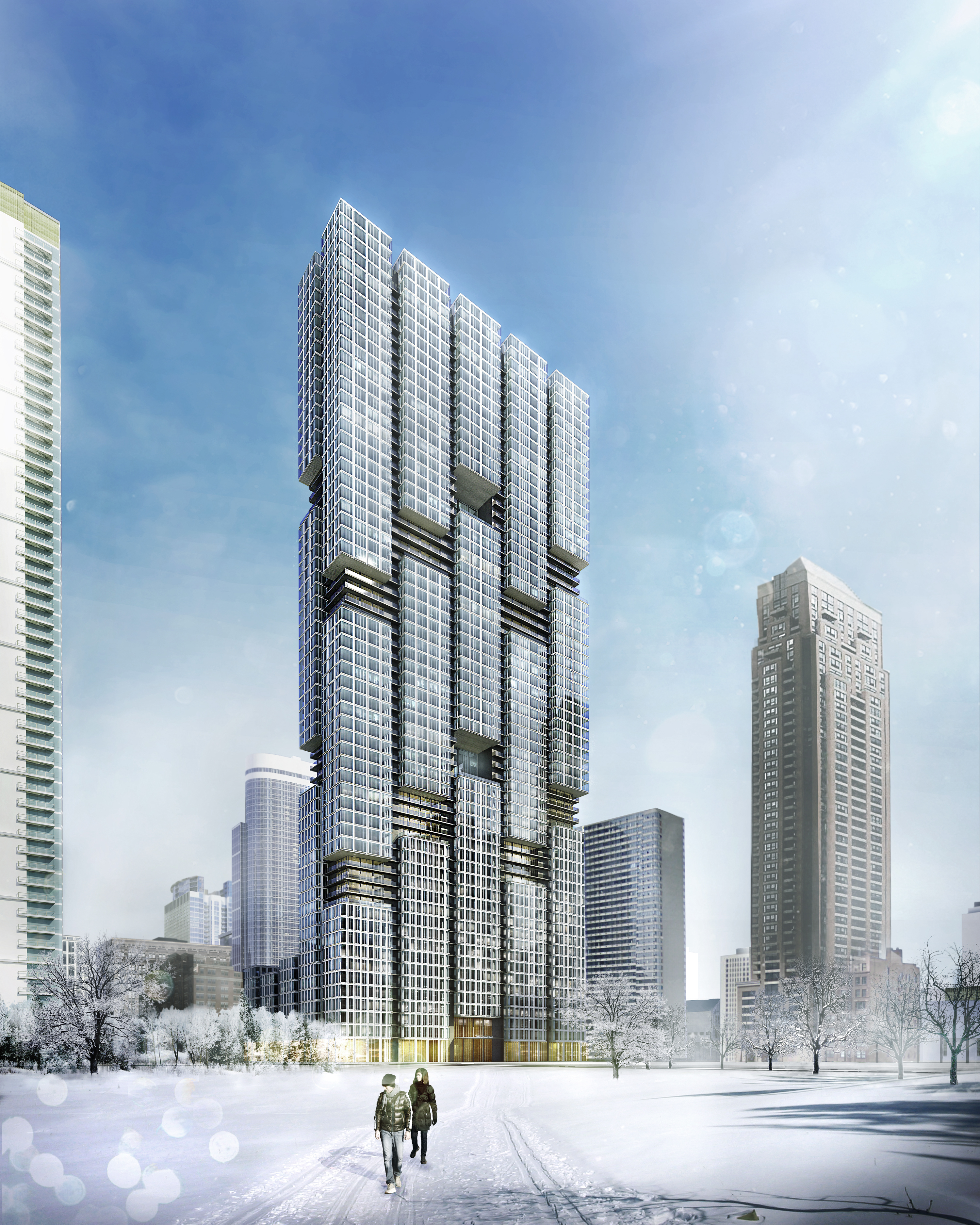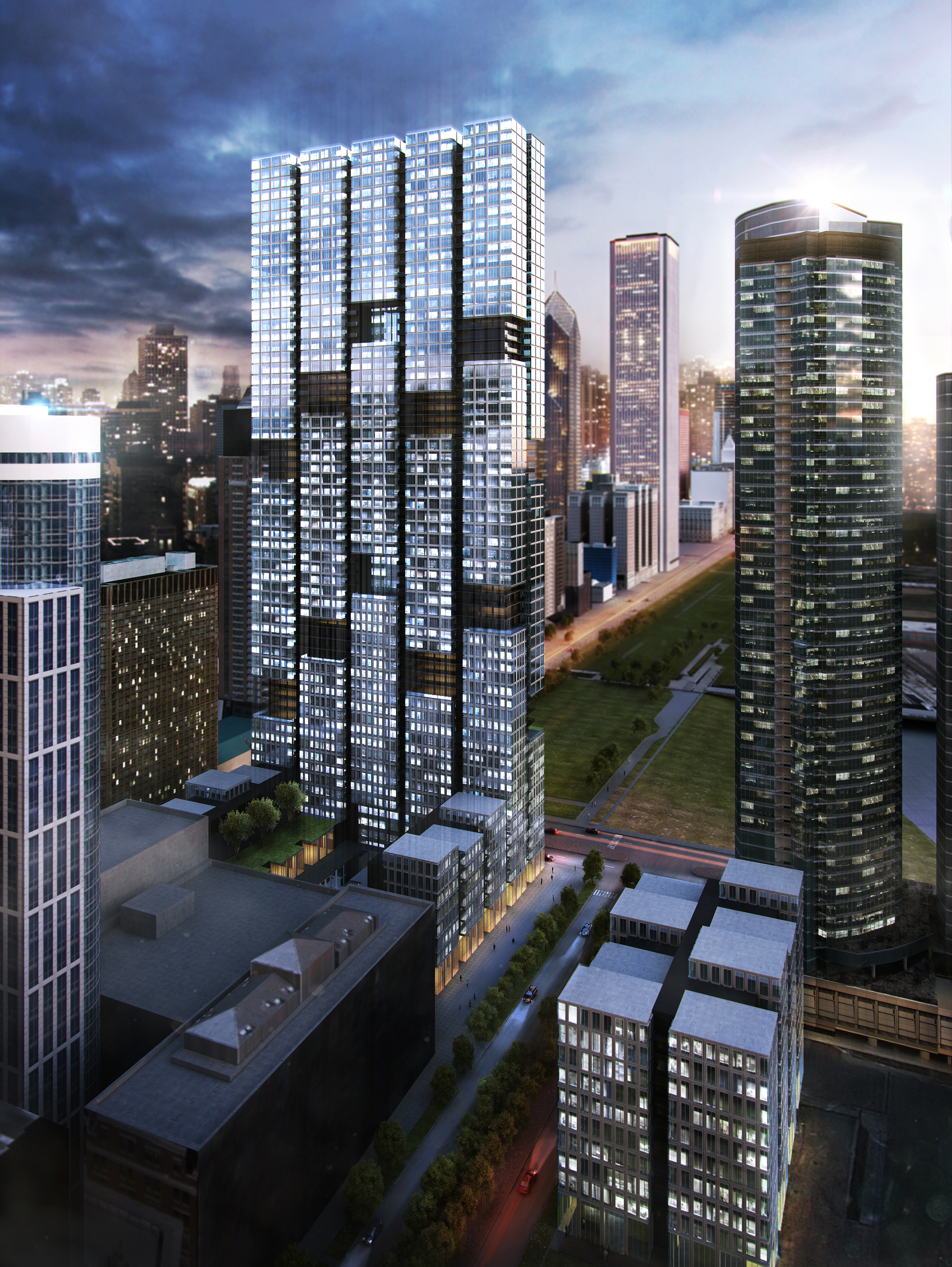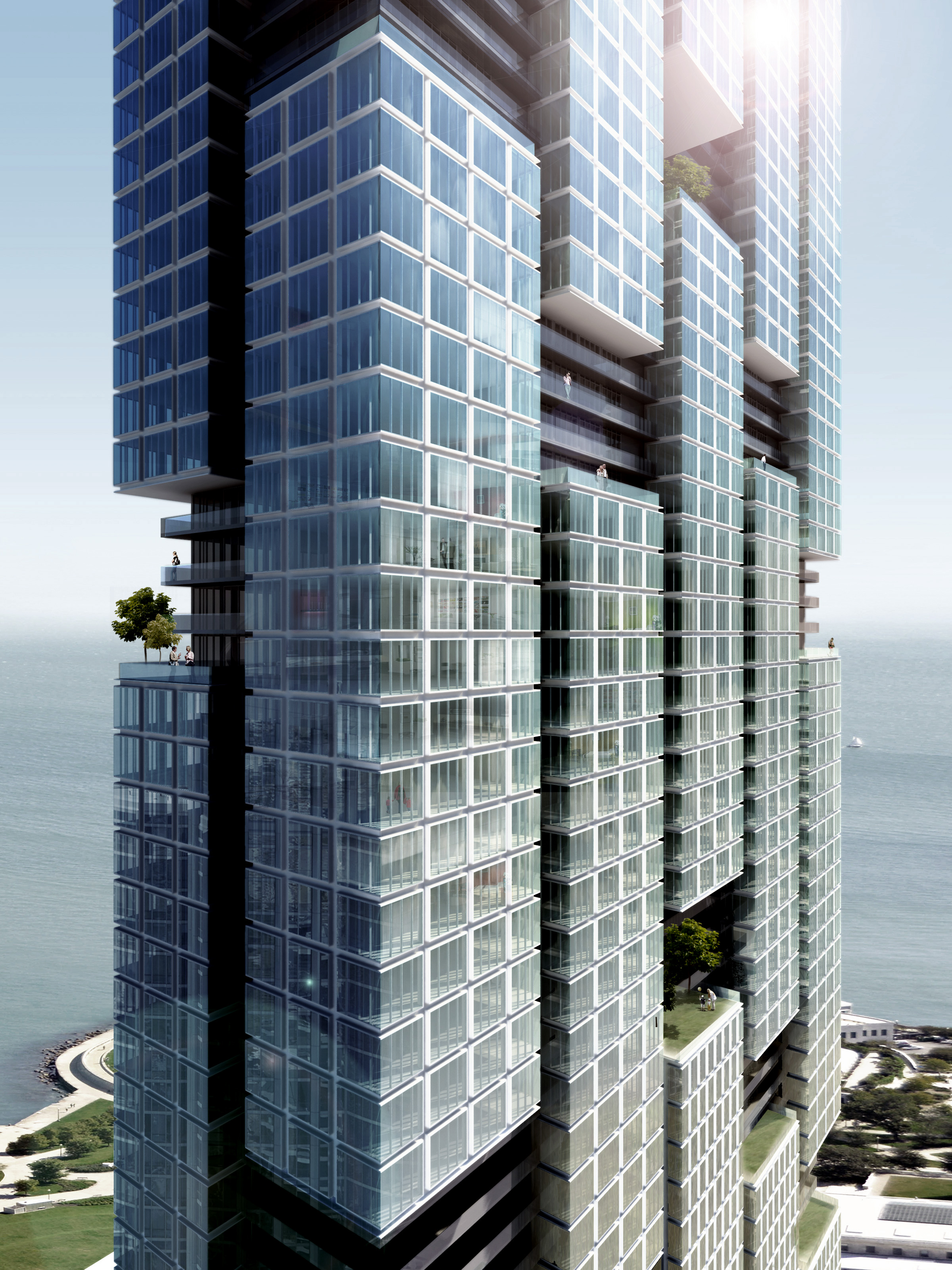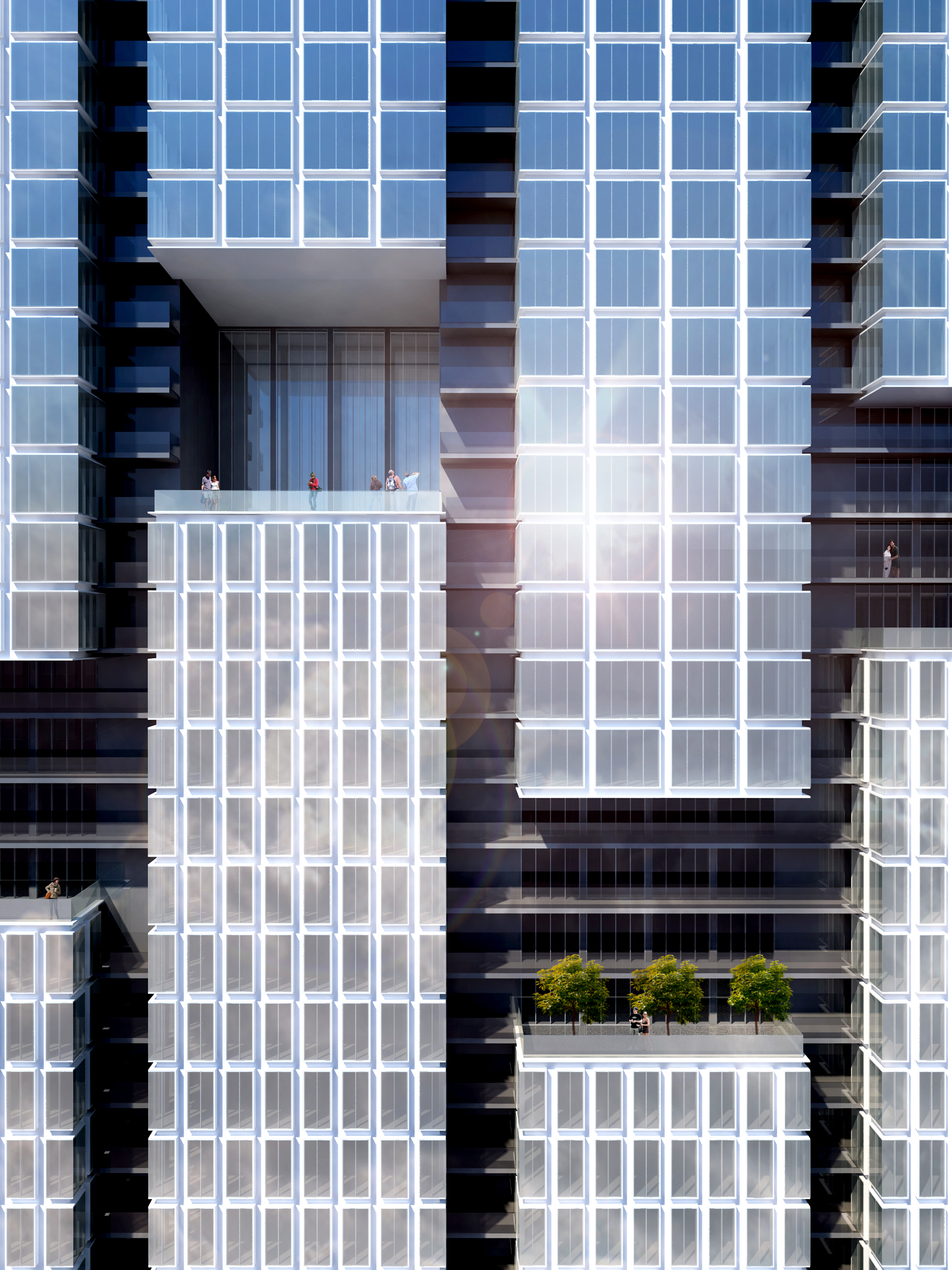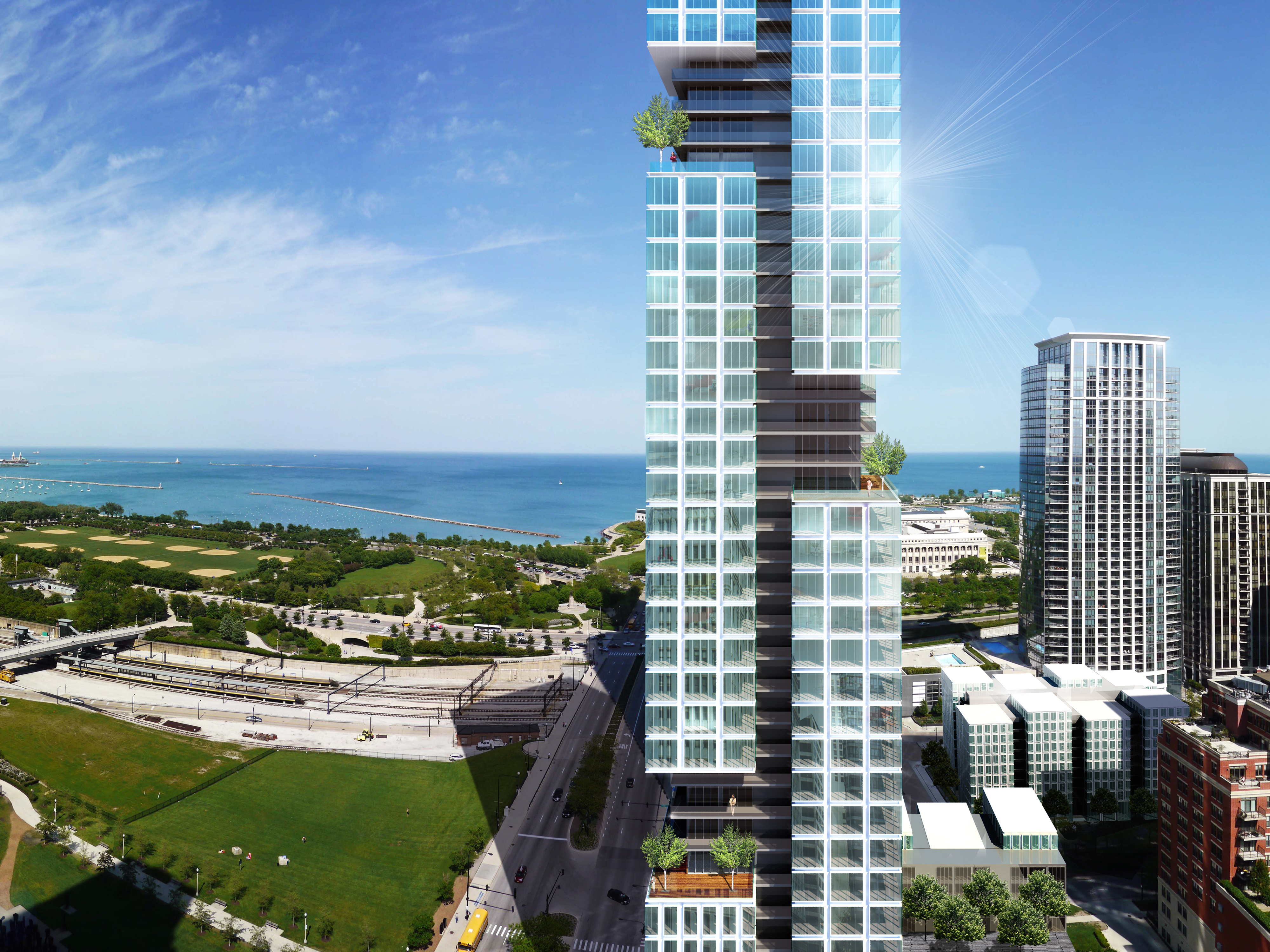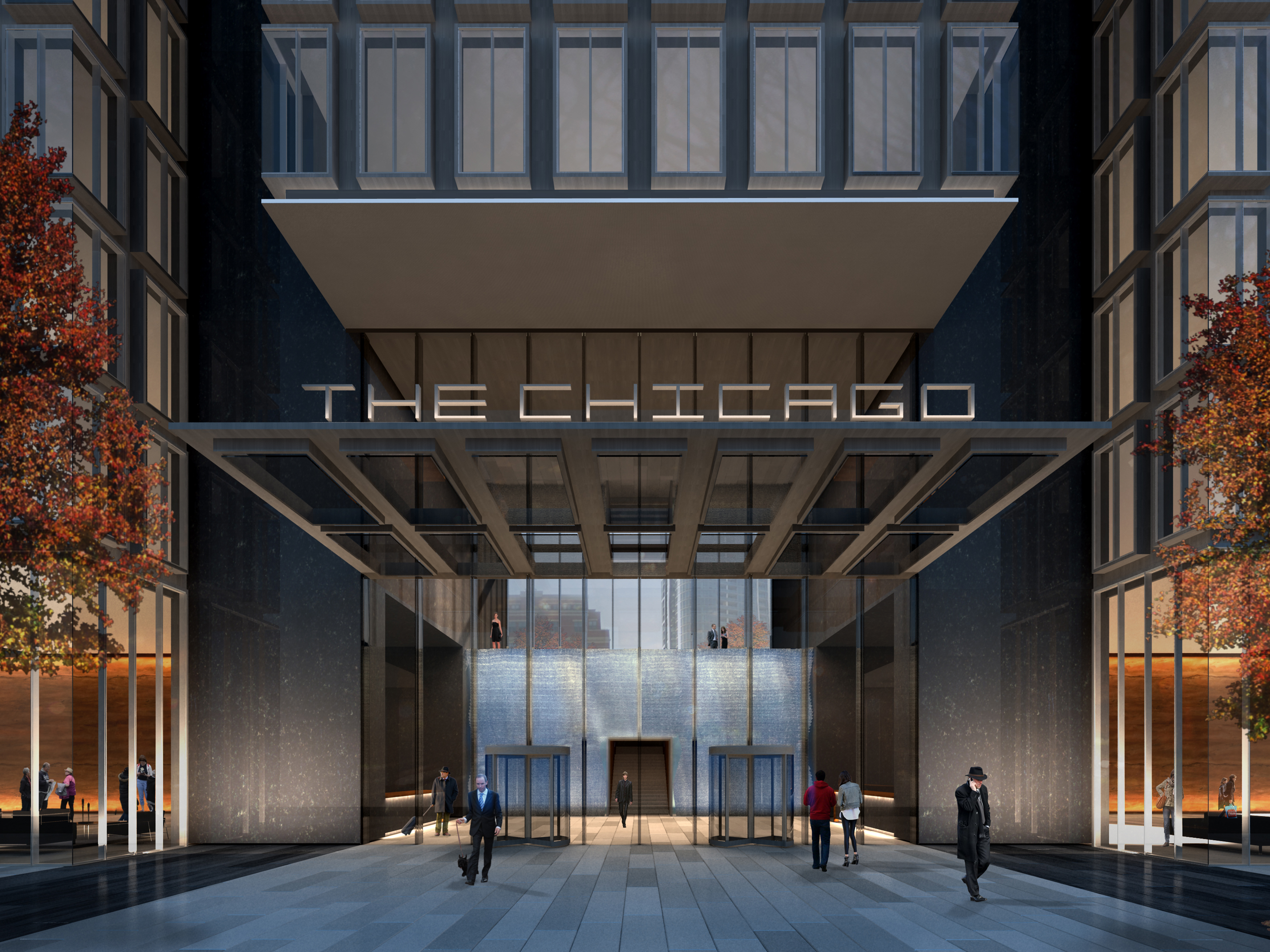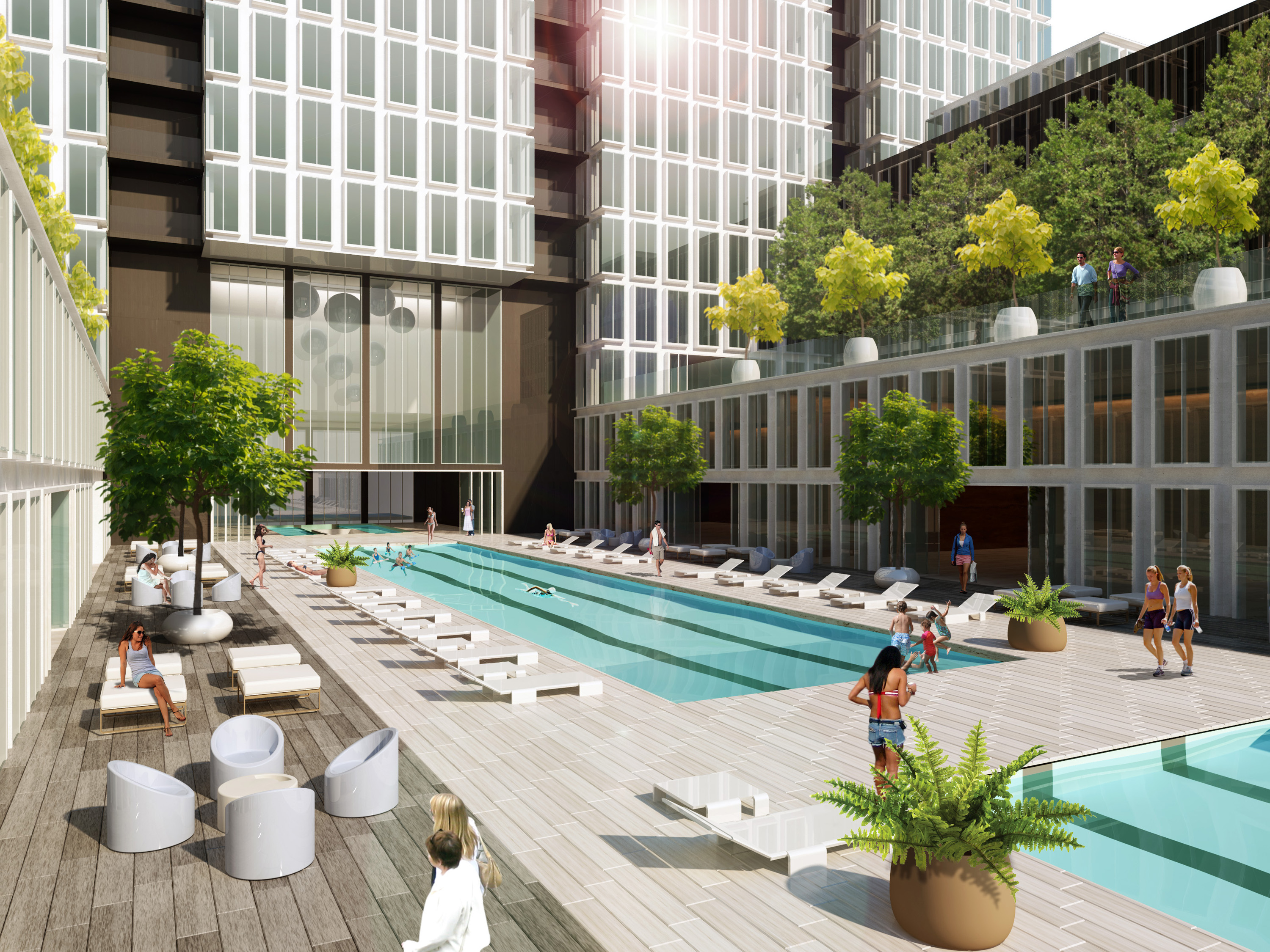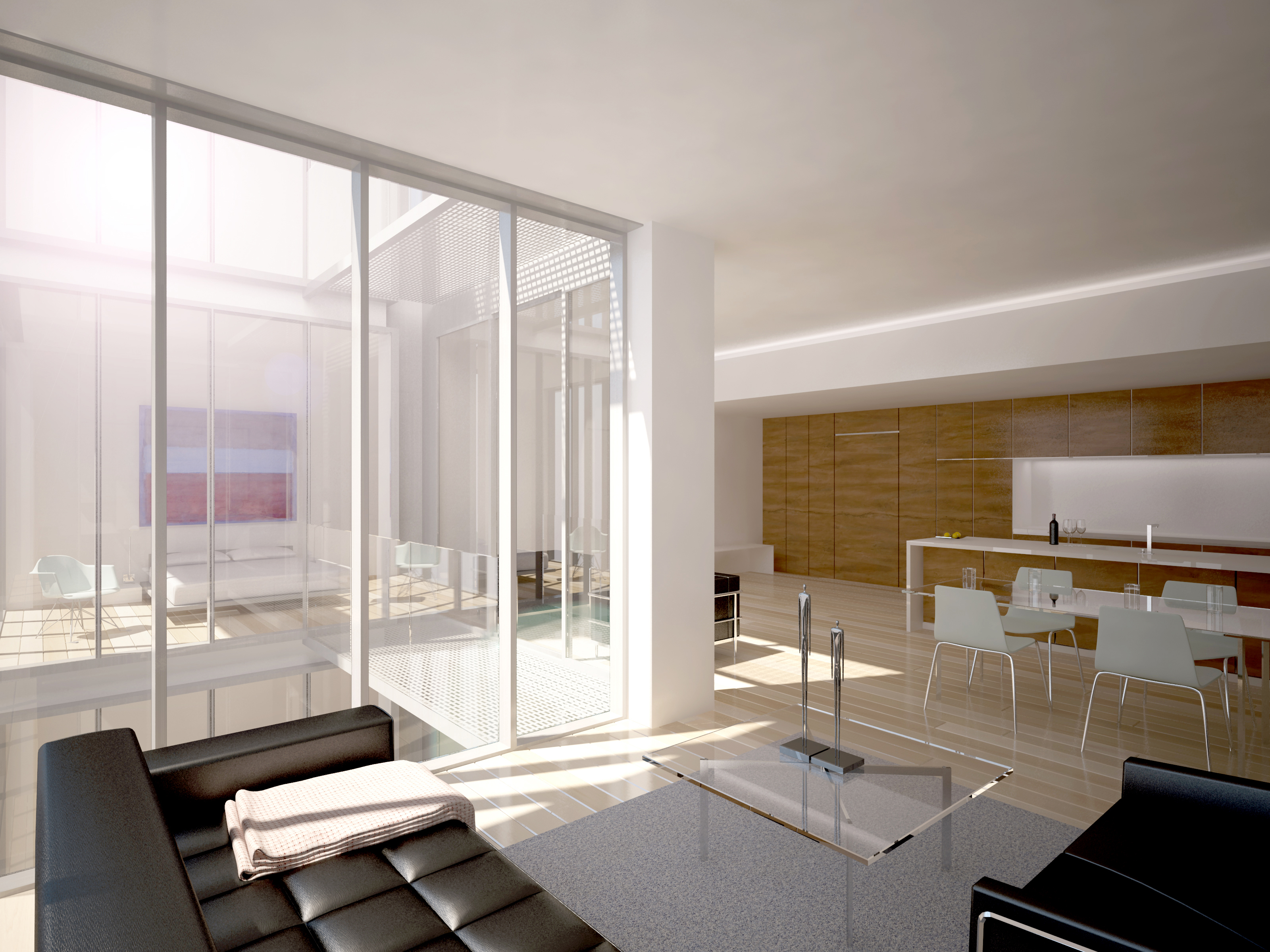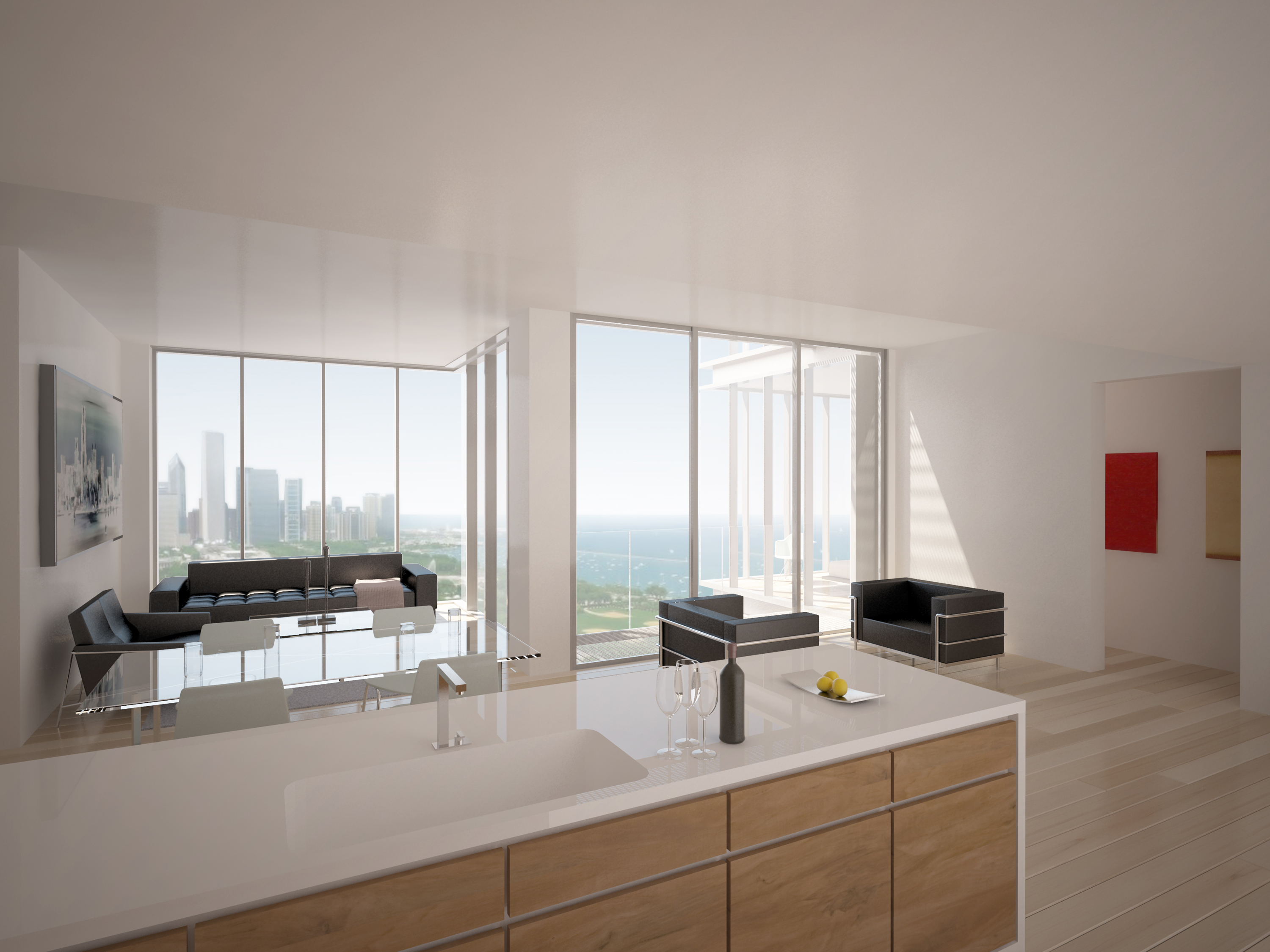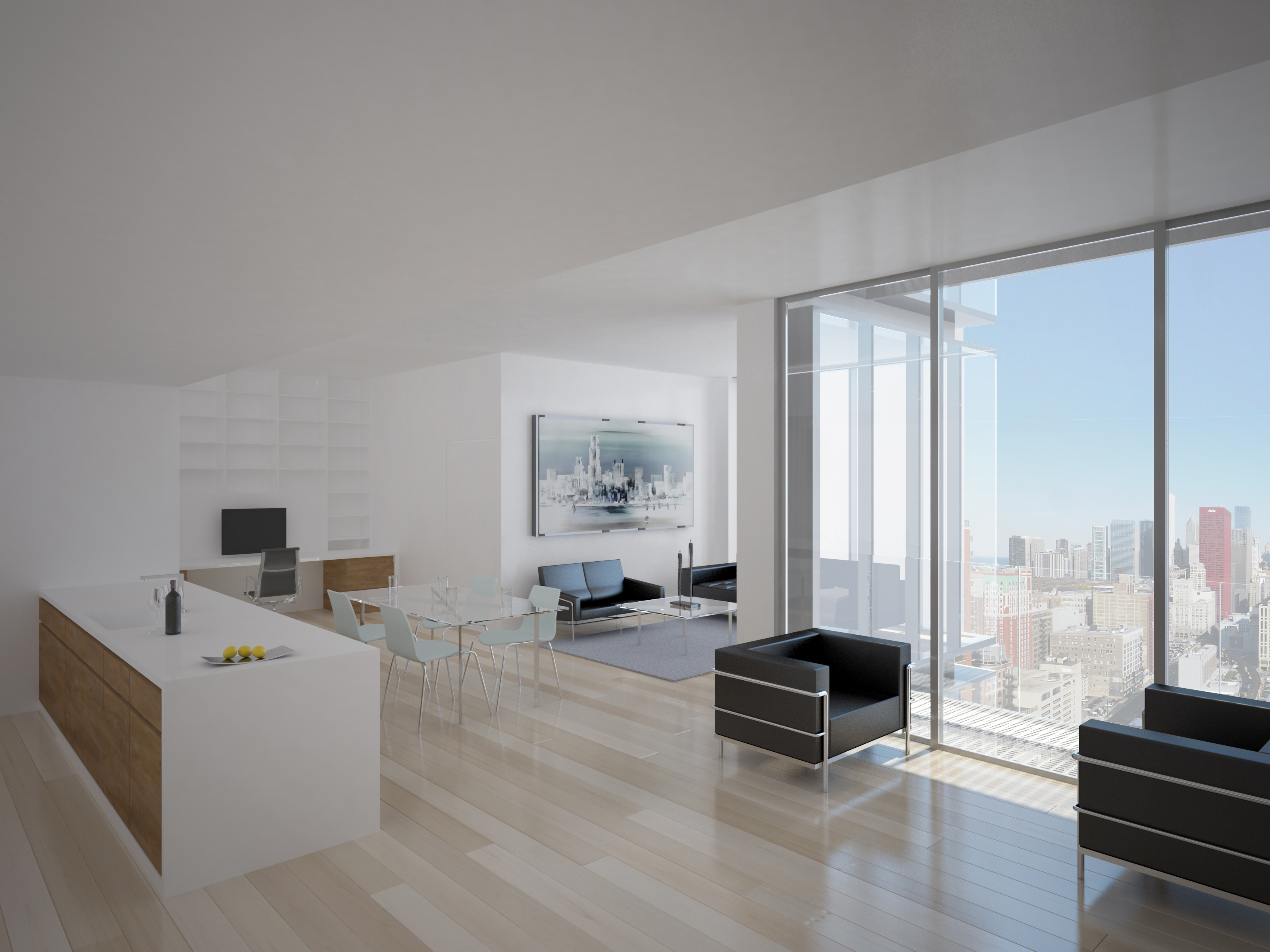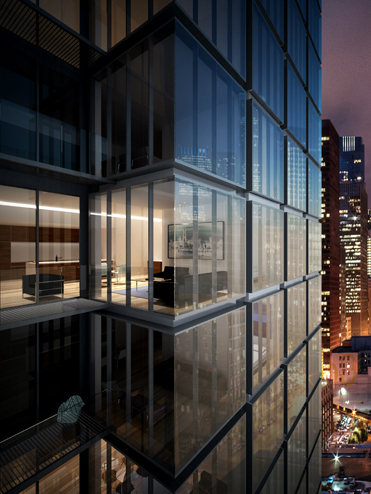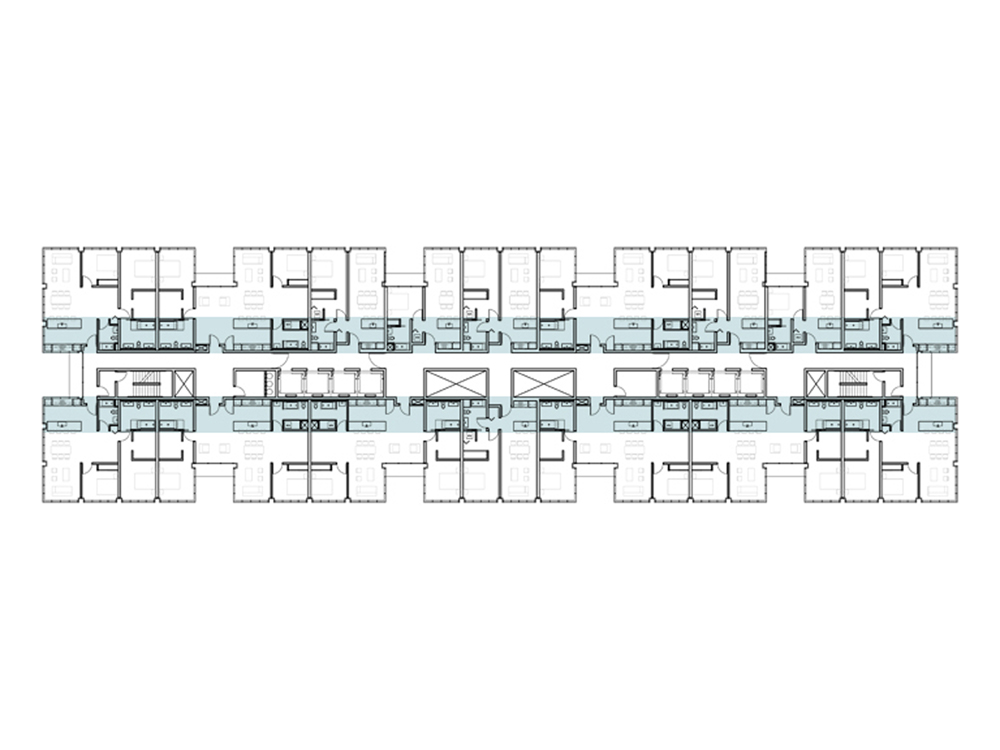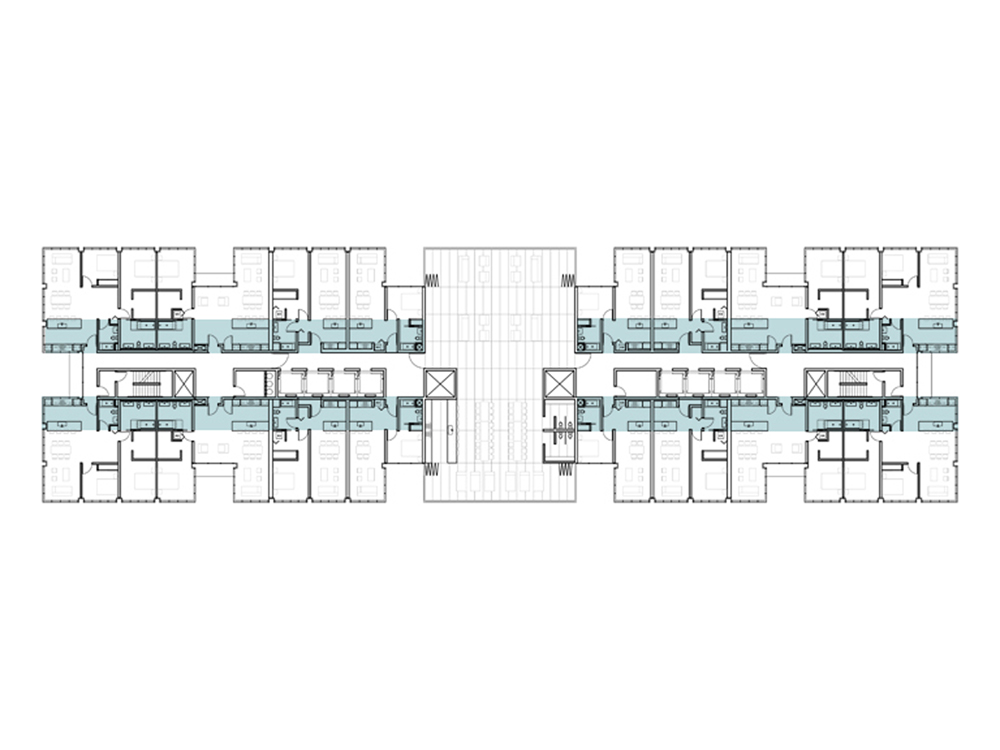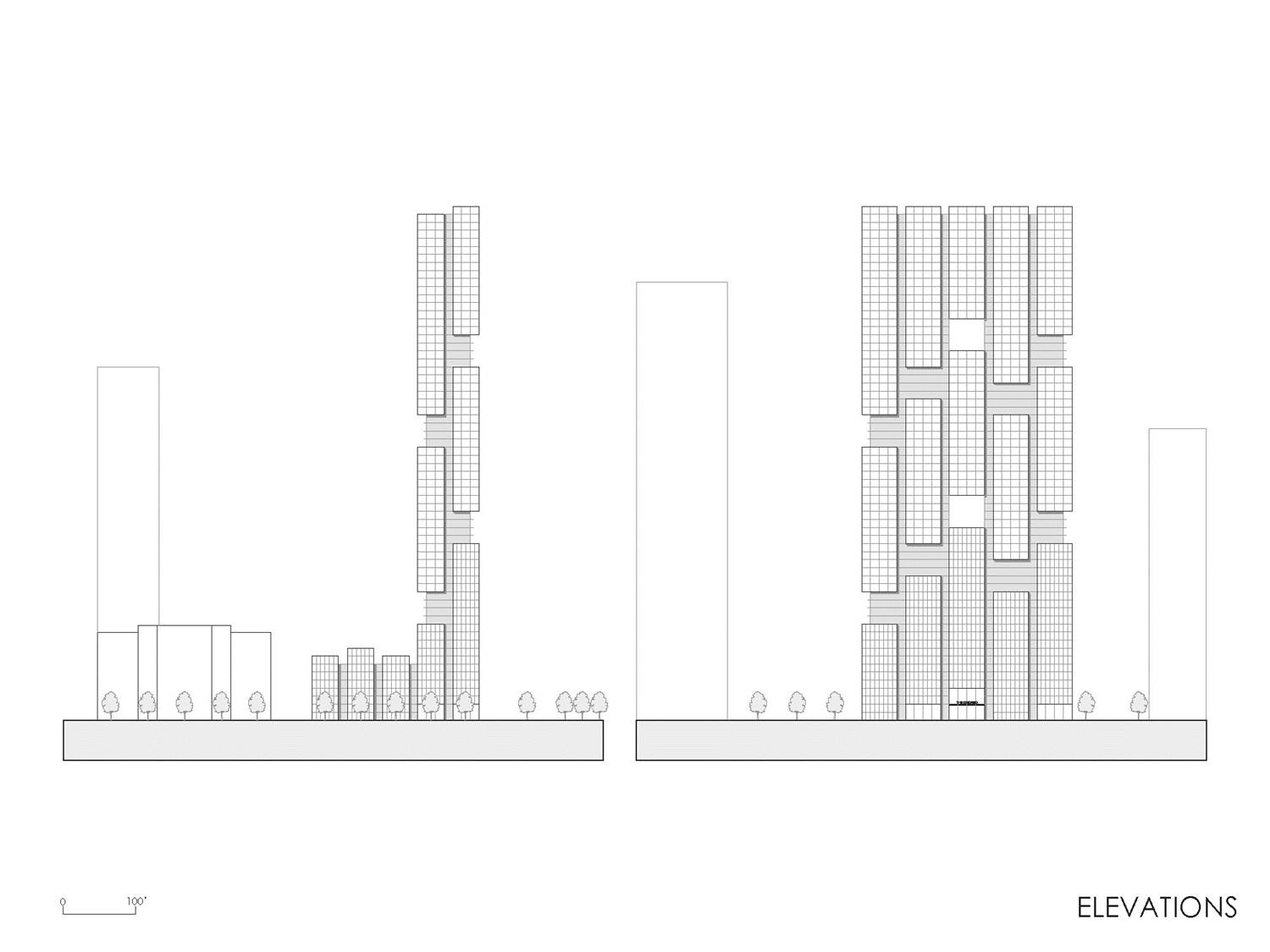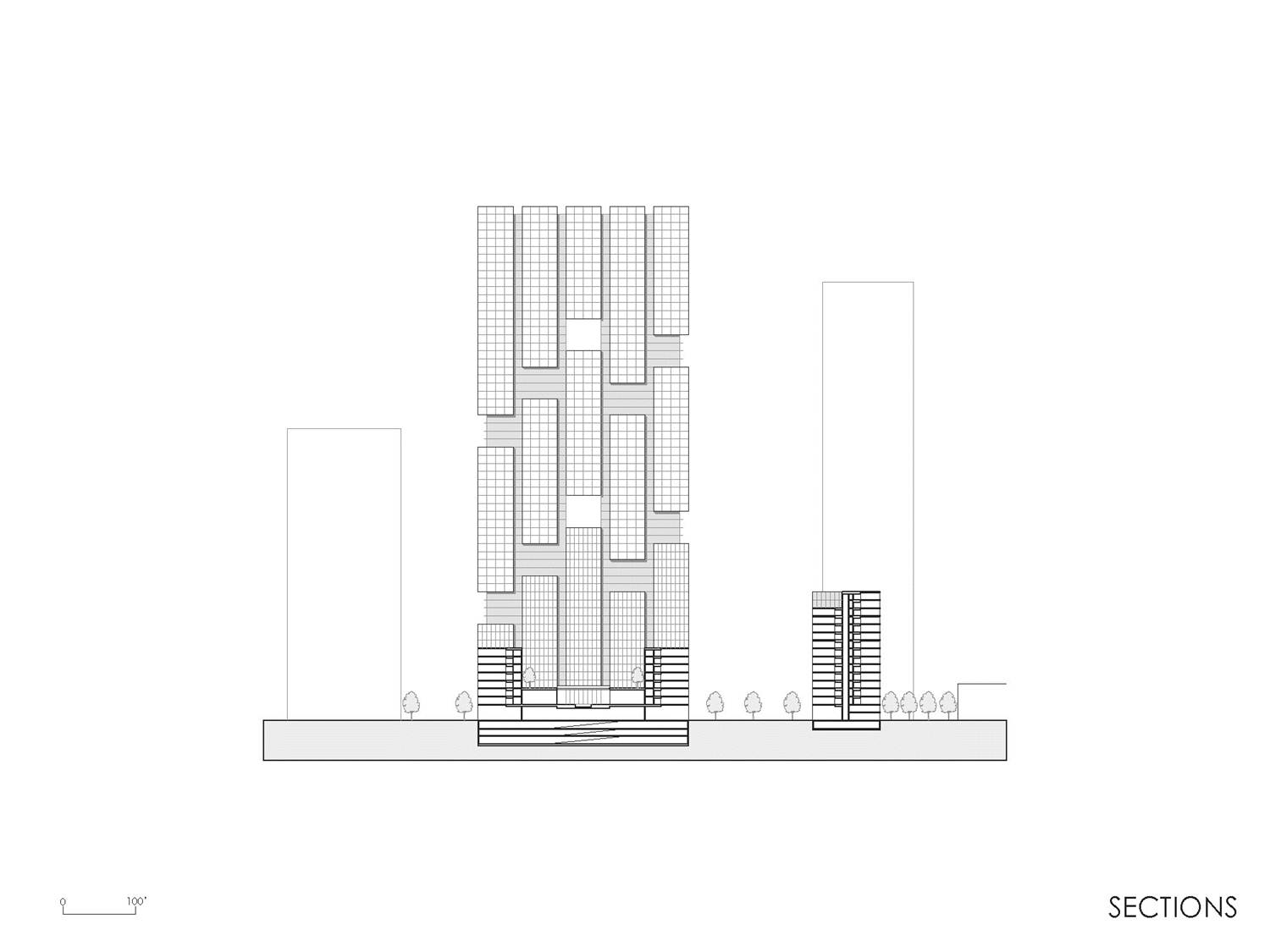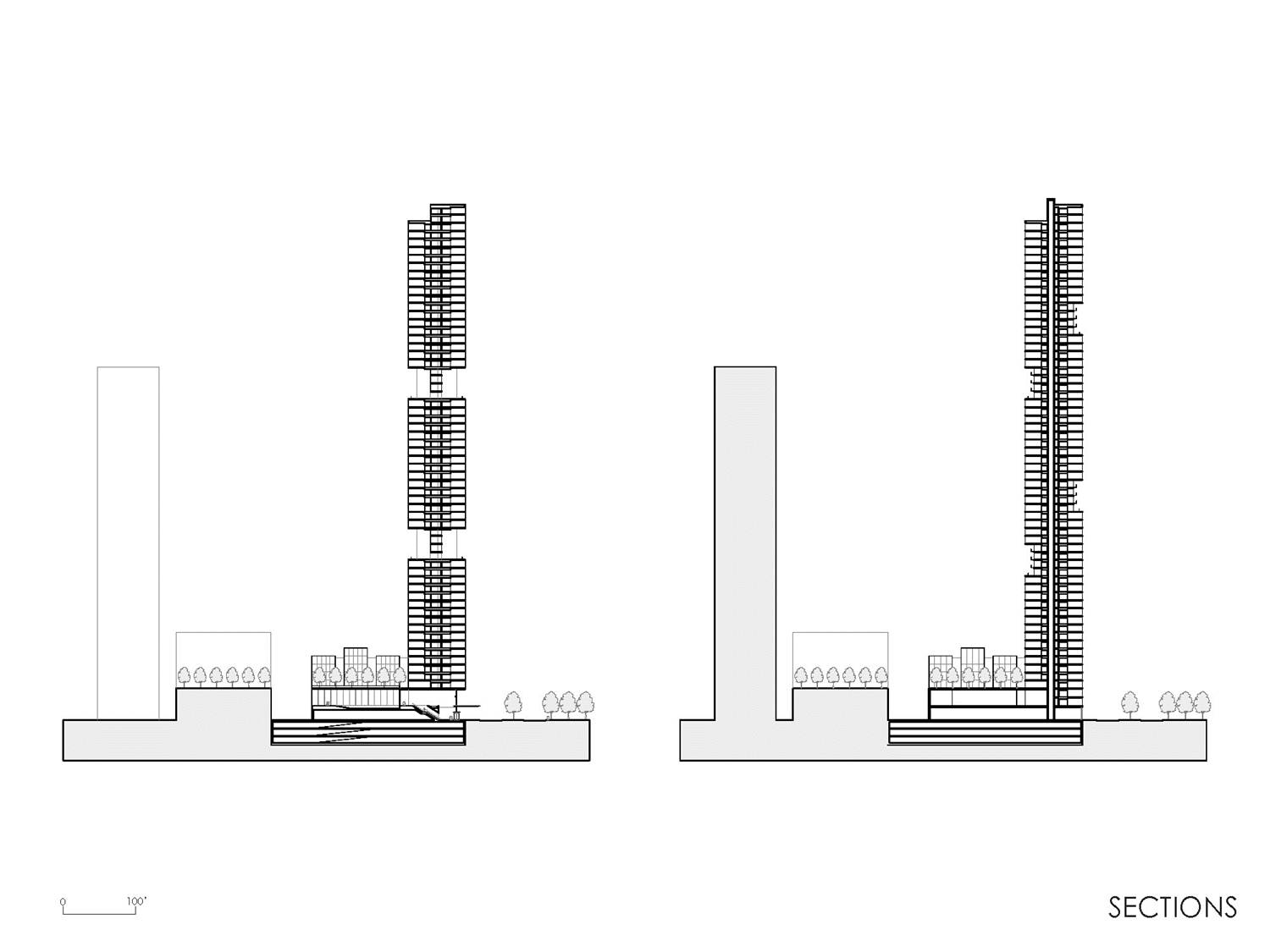Chicago, IL | 2013
Chicago is for Modern Architecture what Florence was for the Renaissance, and the same significance that the column had for ancient architecture can be attributed to the gridded frame. In Chicago, the grids which create the geography on the ground extrude vertically to organize the sky.
THE CHICAGO is a building in Chicago, of Chicago, about Chicago.
THE CHICAGO is a palimpsest of the city.
THE CHICAGO responds to and marks its particular site as a bookend and reflection of Grant Park, and as a terminus of Michigan Ave which wraps onto its façade. The slender slab preserves lake views for neighboring towers and optimizes them for its occupants.
THE CHICAGO responds to the climate – it is an inverted radiator of protected balcony courts which each unit nests around, shielded from the wind.
THE CHICAGO employs the rigor and pragmatism of traditional Chicago Architecture. Clearly defined strata organize vertical distribution, horizontal access, services and free space in the structured geometry of the plan.
THE CHICAGO homes are unique but ordinary. The easily inhabited spaces on a 12’ grid have everything provided – inhabitants need bring only beds, tables, chairs, kitchenware and clothing.
THE CHICAGO homes have flexible space and simple geometry to accept the grid of standard available furniture so that each occupant can complete the design of their homes in their own unique way. The inverted radiator balconies allow light to penetrate deep into the units.
THE CHICAGO has memorable communal spaces: the lake lobby is woven with the spa pools above, one indoor, one outdoor. These pools are flanked by extensive communal facilities for exercising and socializing, and two levels of landscaped decks with southern exposure.
THE CHICAGO’S two sky lounges provide for gatherings in the air.
THE CHICAGO has state of the art green technology including geothermal temperature control, passive ventilation shafts, solar water heating and LED lighting throughout.
Our design for The Chicago is steeped in the logic of the city, a palimpsest reflecting the confidence and pragmatism of the first born city where modernism emerged, responding to its climate, and providing urban homes as frames for the contemporary life it supports.
